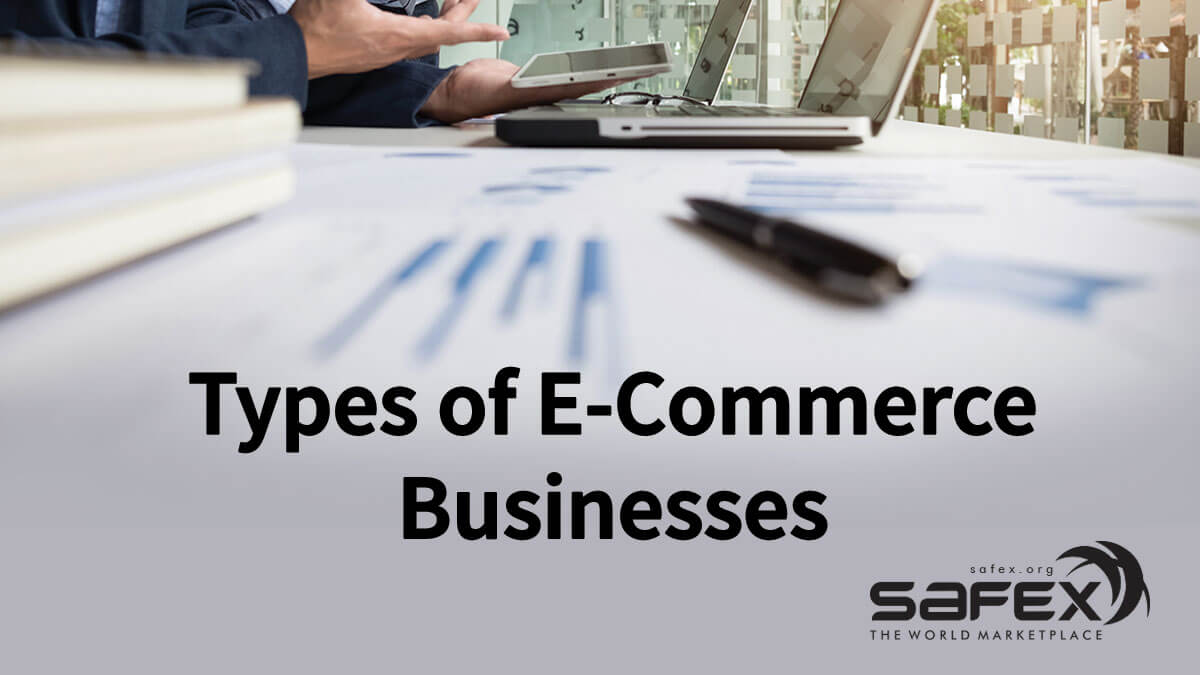Types of E-Commerce Businesses: E-Commerce Business Classifications
In this article, you will learn about the different traditional E-Commerce business models, types of E-Commerce websites and the value delivery methods in use. You can classify your business as one of the types of eCommerce businesses and start optimizing features as well as implementing new ones.

From the first openings of eCommerce stores in the 1990s, we have grown to love the idea of shopping from home. Each year, there are more and more people who are getting comfortable enough to buy online. Additionally, last year taught people worldwide to trust in their online purchases, and we all have praised eCommerce stores during the lockdowns. Selling goods online is not necessarily reserved for retail shops that want to expand their business. Today, you can sell almost anything (including services) and launch a successful online store without the need of having a brick-and-mortar one. Let's assume you are thinking about starting a business online. In that case, we would advise you to not just jump straight to it but instead to do some fundamental research on how to make your business successful in the long run and increase eCommerce revenue. One of the fundamentals is learning more about the different types of eCommerce businesses. Look no further because that’s exactly what we are going to go through here. Let’s start.
Traditional eCommerce business models
Before launching your eCommerce business, you should think about the type of business model which you are going for. Odds are, you are going to fall into one of the following categories. Some companies even operate in several different categories simultaneously. Let’s take a look at four traditional types of eCommerce businesses:
- B2B (Business to Business) eCommerce model refers to businesses selling their products or services to other companies. These transactions tend to have more recurring purchases and high order value but also a longer sales cycle. They typically require more startup cash. Benefits of B2B eCommerce stores include scalability and growth, increased reach, more sales and other features. Here you can read about the hottest interesting B2B trends in 2021.
- B2C (Business to Customer) businesses sell their products to the end-user. This model is the most common and the most familiar one to people since it is the traditional retail model. Think about purchasing clothes, shoes, cosmetic products, etc. All those purchases are part of a B2C transaction. B2C businesses are often found offline as well (as brick and mortar stores), but it does not have to be the case.
- C2C (Customer to Customer / Consumer to Consumer) environments are also known as online marketplaces. C2C businesses are meant to connect customers who want to exchange goods and services. They make money by charging fees for listings or transactions made between the customers. Consumers often use already existing platforms to sell their products but they can also set up C2C stores on their own websites.
- C2B (Customer to Business) model refers to individual entrepreneurs (or customers) who sell their goods and services to companies. For example, companies like Upwork offer businesses to list the work they need to be done. On the other hand, individuals can apply and offer their services to those companies while having an opportunity to set up the price on their own.
Types of eCommerce websites
Whatever category you fall into, your eCommerce store would not be complete without a website. After you have identified your suitable eCommerce business type, you pick one of the most common website types for your store:
- A single brand website is used to sell products of one person or a business. It is the most common pick for people who are starting an eCommerce store. On this type of website, you cannot find products from different brands.
- Online retailer websites are also common since they are usually used to wholesale other brands' products. For example, you could run a website that sells gym wear from several different gym wear brands.
- Affiliate websites are referred to as websites that sell other peoples' products in exchange for a commission. For example, if you already have an established website with many visitors, you can turn it into an affiliate website and gain more revenue.
- Marketplaces are websites where individuals can list their products and put them on sale. Some of the most famous example of a marketplace is Amazon, Shopify, Etsy, and soon Safex Marketplace. There are also minor, niche marketplaces where only specific products such as shoes or jewelry are for sale.
Value delivery methods
After all, eCommerce is all about making money while providing products and services. If you want to succeed, you need to establish a value delivery method that will help you stand out from your competitors and make your business worth sharing. After choosing from different types of eCommerce businesses, here are some value delivery methods you can consider:
- D2C (Direct to Consumer) method means that you are cutting out the middleman, which helps you build loyal followings and rapid growth.
- White label vs. Private label: To white-label a product means to buy it from the manufacturer and then rebrand and repackage it. On the other hand, private labeling refers to brands that make, label and package their products themselves.
- Wholesaling is used by retailers who offer their products in large quantities for a lower price. Although this is typically a B2B practice, many retailers also provide B2C wholesaling services to budget-conscious customers.
- Dropshipping means selling someone else’s product on your website for a commission. Additionally, the shipping is handled by the brand. Dropshippers are like a third party that connects buyers to manufacturers. Here we explained what are the differences between Dropshipping and Online marketplace.
- Subscription services are widespread nowadays. By offering such a service, you can deliver your products or services to your customers regularly in exchange for their monthly subscription payment.
Final thoughts
Now, that you have learned about the different eCommerce business models, their websites and value delivery methods, you can classify your desired business and begin to optimize. With different types of eCommerce businesses in front of you, it is essential to find a suitable platform. While it is easy to find more information about the major established traditional platforms you may want to look into how the future of using cryptocurrency for doing eCommerce business may look like.
Safex Marketplace - a blockchain-based eCommerce platform powered by Safex - enables hosting of listings and settlement of purchases using cryptocurrency. The use of this technology comes with beneficial features for its users such as low transaction fees, data privacy and fast processing of transactions. While you can have a look at the first version of the application here, more features will be integrated as development continues so that it can turn into a platform suitable for different types of businesses and applications in the future.
